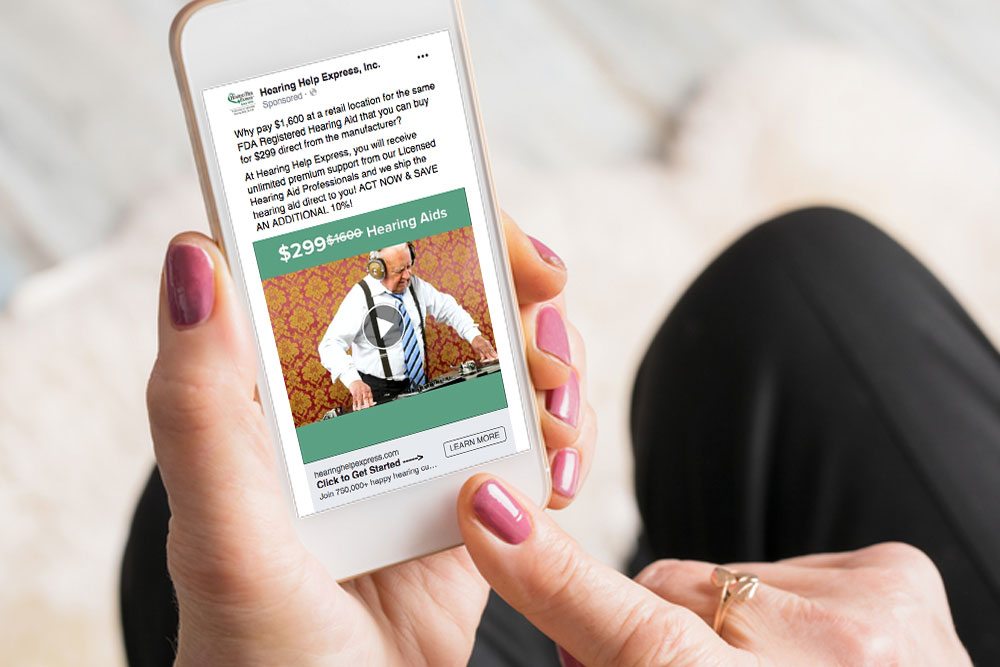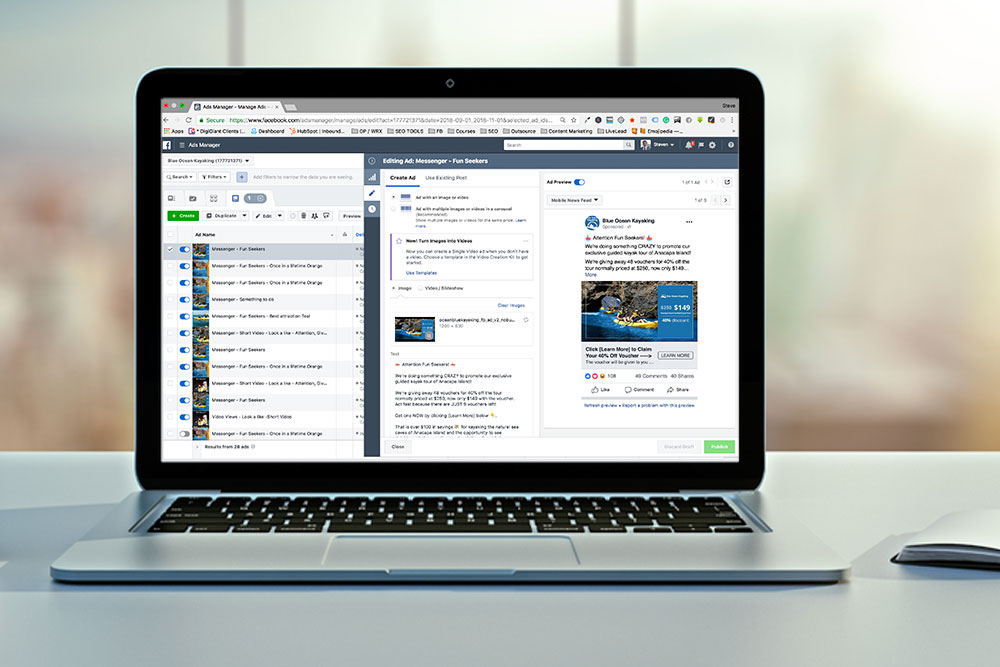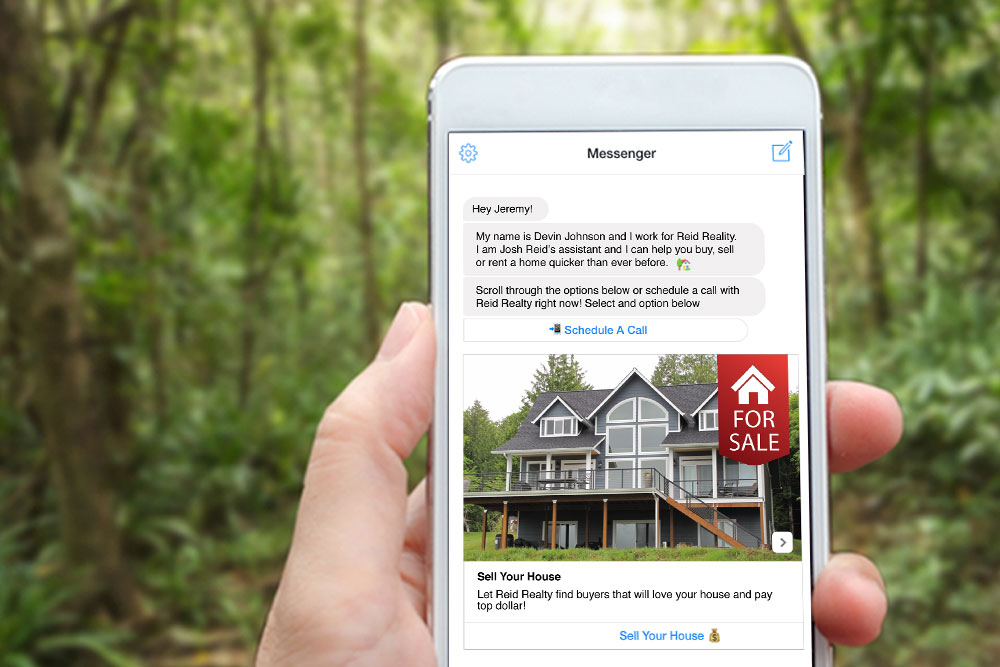SOCIAL MEDIA MARKETING AGENCY THAT DRIVES QUALIFIED CONVERSIONS
Targeted social media advertising across Facebook, Instagram, Messenger, Twitter and Linkedin generates high quality leads and high value sales
Giant Partners is a social media marketing agency with data and expertise needed for campaign success. Prices based on target database size, campaign schedule, and ad spend budgets.
SOCIAL MEDIA MARKETING AGENCY THAT DRIVES QUALIFIED CONVERSIONS
Targeted social media advertising across Facebook, Instagram, Messenger, Twitter and Linkedin generates high quality leads and high value sales.
Giant Partners is a social media marketing agency with data and expertise needed for campaign success. Prices based on target database size, campaign schedule, and ad spend budgets.
Layer custom audience data on top of standard advertising interest groups to pre-qualify, exclude, or refine customer targeting during Meta (Facebook, Instagram, Messenger), X (Twitter) and Linkedin campaigns. Get free social media target database visualization for your business
SOCIAL MEDIA MARKETING AGENCY BEST PRACTICES

By default social network marketing company including Facebook, Instagram, Linkedin and Twitter allow companies to run ad campaigns based on location, age, gender, language and standard interest groups.
Custom audience list uploads empower companies to match social media profiles and run targeted campaigns based on:
Income, net worth, credit score, home value, vehicle ownership, marital status, education, military service, ethnicity and more.
Best Practice: Target business contacts using their mobile phone number on social media (Our b2b social media agency can help your team do this).
Did You Know? Custom audience lists can be refined based on campaign performance to perpetually increase lead quality and lower advertising costs.
Why are custom audience databases so important for social media marketing campaigns?
Custom audiences are a valuable tool in social media marketing agency campaigns. They are used to target specific groups of people with your advertisements based on various criteria or data you have collected. Here’s how custom audiences are used in social media marketing:
1. Direct user targeting: Custom audiences are often used to retarget people above and beyond what is available with platform ad manager accounts. This could include individuals who you have pre-qualified to buy your product based on demographics, financials, interests and or purchase history.
2. Customer segmentation: You can create custom audiences based on various criteria such as demographics, interests, behavior, and location. This allows you to segment your audience and tailor your ad content to specific groups. For example, you can create separate custom audiences for different age groups, interests, or geographical locations to deliver more relevant messages.
3. Lookalike Audiences: Many social media platforms offer the option to create lookalike audiences. These are new audiences that are similar to your existing custom audiences. By using a lookalike audience, you can expand your reach to people who share characteristics and behaviors with your current customers or engaged users.
4. Email Marketing Integration: Custom audiences can also be built from email databases. You can upload your email list to the social media platform, and it will match the email addresses to user accounts. This enables you to reach your existing subscribers or customers on social media and engage with them further.
5. Exclusion Targeting: Custom audiences are helpful for excluding (omitting) specific groups of people from seeing your ads. For instance, you might want to exclude existing customers from seeing ads designed for new customer acquisition to optimize your ad spend.
6. Personalization: Custom audiences allow for more personalized advertising. You can create tailored messages and promotions that resonate with the specific characteristics and behaviors of the audience segments you target.
7. Testing and Optimization: Marketers can use custom audiences to conduct A/B testing and analyze the performance of different ad variations for specific audience segments. This data-driven marketing approach helps refine ad strategies and optimize campaigns.
In summary, custom audiences are a versatile tool for any social media marketing agency that enables businesses to deliver more relevant and personalized content to their target audience, improve ad efficiency, and increase the likelihood of conversion. By using custom audiences effectively, marketers can achieve better results and ROI from their social media advertising campaigns.

High performing social media advertising campaigns are achieved by making real-time adjustments to: advertising budget allocation (daily-weekly-monthly), content mix (video, image, text), and custom audience list uploads.
Once your advertising campaign has been optimized it can be scaled up or down to generate the leads you need with the marketing budgets you have.
Best Practice: Set a CPM (Cost-per-impression), CPL (Cost-per-lead) and CPA (Cost-per-acquisition) benchmarks and give your team a time frame to reach the goal. Once the goal is reached, create a ramp schedule to scale your ad spend over upcoming weeks and months.
Did You Know? For business campaigns, custom audience list uploads typically decrease cost-per-lead 50% after 90 days of advertising (Source).
What types of advertisements should your company be running social media?
Determining which ads your company should promote on social media involves a strategic process that takes into account various factors to ensure that your advertising efforts are effective and aligned with your business goals.
Here’s a step-by-step guide to help you make informed decisions:
1. Define Goals: Start by clarifying your advertising objectives. Are you looking to increase brand awareness, drive website traffic, generate leads, boost sales, or achieve another specific goal? Your goals will shape your ad strategy.
2. Know Target Audience: Understand your ideal customers. Create detailed customer personas to help you identify their demographics, interests, behaviors, and pain points. This information will guide your ad targeting.
3. Choose the Right Social Media Platforms: Select the social media platforms that align with your target audience. Different platforms attract different demographics and user behaviors. For example, Facebook, Instagram, Twitter, LinkedIn, and TikTok have distinct user bases.
4. Research Your Competitors: Study your competitors’ social media advertising strategies. Analyze their ad content, engagement, and audience response to gain insights into what works in your industry.
5. Budget Planning: Determine your advertising budget. Consider the cost of running ads on different platforms and how much you’re willing to spend. Your budget will affect the type and scale of your campaigns.
6. Create Compelling Ad Content: Develop eye-catching ad creatives, including images or videos, ad copy, and a clear call to action (CTA). Make sure your ads are aligned with your brand and are relevant to your target audience.
7. A/B Testing: Test different ad variations to see which ones perform best. Experiment with various headlines, ad copy, visuals, and CTA buttons. A/B testing helps you optimize your ad performance.
8. Ad Targeting: Combine the platform’s targeting options with custom audience databases to reach your desired audience. You can target by demographics, interests, behavior, location, and more. The more precise your targeting, the better your ads will perform.
9. Schedule Ad Campaigns: Set a schedule for your ad campaigns. Determine the best times and days to reach your audience based on their online activity.
10. Monitor and Analyze: Regularly track the performance of your ads using social media advertising tools and analytics. Pay attention to key metrics like click-through rate (CTR), conversion rate, return on ad spend (ROAS), and engagement.
11. Adjust and Optimize: Use the data you collect to make informed adjustments to your ad campaigns. Optimize underperforming ads and scale up successful ones.
12. Compliance and Legal Considerations: Ensure your ads comply with the advertising guidelines and policies of the social media platforms you’re using for the industry that you are categorized. Avoid any misleading or prohibited content which may get your campaign and account suspended.
13. Seek Social Media Marketing Agency Support: If you’re unsure about running social media ads or need assistance with complex campaigns, consider hiring a social media marketing agency to setup, configure, launch and scale your digital advertising campaign.
14. Stay Informed of Algorithm Updates: Keep up to date with changes in social media algorithms, advertising options, and trends to adapt your strategies accordingly.
Remember that successful social media advertising campaigns require ongoing analysis, refinement, and adaptation to meet your business objectives. Be prepared to learn from your results and evolve your approach over time.

Amazingly, chatbots tout an incredible 80% open rate and 40% click thru rate. Facebook and Instagram users can get messages by: clicking a link, commenting on a post, or submitting a form.
Once a user enters a message thread, that individual can be sent directed to a live representative and or sent texts and emails that push to the lock screen of their phone.
Best Practice: Configure a chatbot to answer FAQs, qualify leads, share product links, and book appointments. Chatbots can function on social media and websites.
What is the best way to use messenger marketing for advertising campaigns?
Using Facebook Messenger for social media marketing agency campaigns can be an effective way to engage with your audience and drive conversions. Here are some best practices for utilizing Facebook Messenger in your marketing efforts:
1. Define Your Goals: Before you start, clearly define your campaign goals. Are you looking to generate leads, increase sales, provide customer support, or simply build brand awareness? Your goals will influence your messaging and approach.
2. Build a Subscribers List: To use Facebook Messenger effectively, you need subscribers. Encourage users to opt-in to receive messages from your page by providing valuable content, promotions, or incentives.
3. Create a Messenger Chatbot: Develop a Messenger chatbot to automate conversations and provide instant responses. Chatbots can handle routine inquiries, guide users through product choices, and even make sales.
4. Segment Your Audience: Segment your subscribers based on their interests, behavior, and preferences. This enables you to send highly targeted and personalized messages, increasing engagement and conversion rates.
5. Send Relevant Content: Send messages that are valuable and relevant to your audience. Avoid spammy or overly promotional content, as this can turn users off.
6. Use Sponsored Messages: Facebook Messenger offers sponsored messages, which allow you to send promotional messages to your subscribers. Use this feature strategically to boost your campaign’s reach.
7. A/B Testing: Experiment with different messaging strategies, images, and calls to action to identify what works best for your audience. A/B testing can help you optimize your campaigns.
8. Use Messenger Ads: Facebook offers ads that can drive users to your Messenger, where they can interact with your chatbot or get more information about your products or services.
9. Provide Quick Responses: Facebook users expect quick responses. Ensure that you respond promptly to incoming messages, especially during business hours. This can improve customer satisfaction and trust.
10. Engage in Conversations: Encourage real-time conversations with users. Use Messenger as a platform for customer support, product recommendations, and addressing inquiries.
11. Monitor and Analyze: Use Facebook’s analytics tools to track the performance of your Messenger marketing campaigns. Monitor open rates, click-through rates, and conversion rates to understand what’s working and what’s not.
12. Respect Privacy and Regulations: Comply with privacy regulations like GDPR and ensure that you respect users’ preferences and privacy settings. Always obtain proper consent before sending marketing messages.
13. Optimize for Mobile: Many users access Messenger on mobile devices, so ensure your content and chatbot are mobile-friendly and load quickly.
14. Encourage Sharing: Encourage users to share your content and promotions with their friends. Word-of-mouth marketing within Messenger can be powerful.
15. Provide Value Outside of Promotions: Don’t limit your interactions with subscribers to promotions alone. Share valuable content, tips, and information to keep them engaged and build a strong relationship.
Remember that Facebook Messenger should be just one part of your overall social media marketing strategy. It’s essential to integrate Messenger into your broader marketing efforts to create a seamless and consistent user experience.
GET SOCIAL MEDIA ADVERTISING STRATEGY FOR YOUR BUSINESS
Send us a message below and we’ll get back to you in 30 min Monday thru Friday 7am to 5pm PT. Call (800) 547-8080 or live chat below for immediate support. We look forward to connecting with you.
ABOUT GIANT PARTNERS
20 years. 5000 customers. Giant Partners is America’s #1 data driven marketing agency. We accelerate campaign performance with proprietary marketing databases, strong branding, effective websites, compelling content, social media advertising, email marketing, web search advertising and marketing automation.
